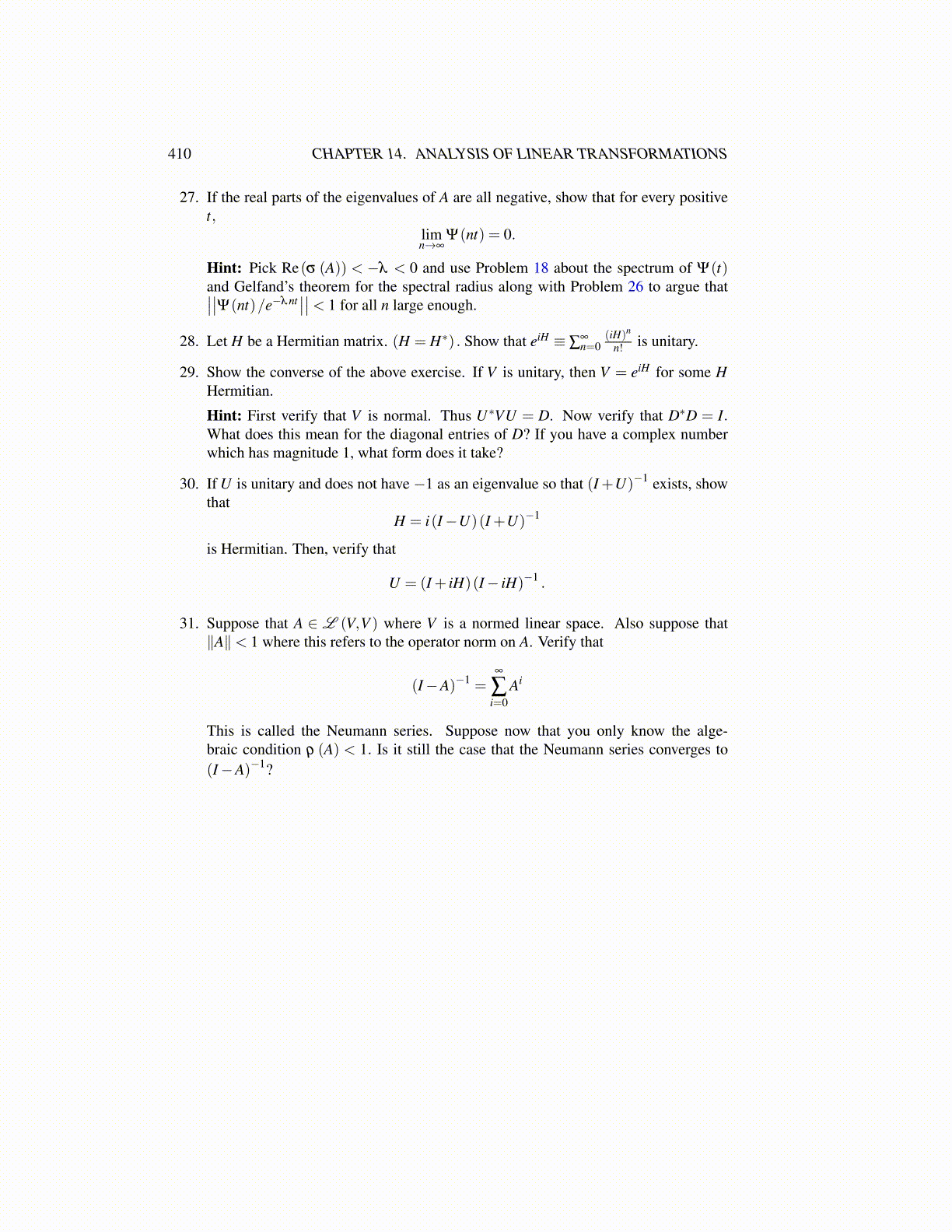
410 CHAPTER 14. ANALYSIS OF LINEAR TRANSFORMATIONS
27. If the real parts of the eigenvalues of A are all negative, show that for every positivet,
limn→∞
Ψ(nt) = 0.
Hint: Pick Re(σ (A)) < −λ < 0 and use Problem 18 about the spectrum of Ψ(t)and Gelfand’s theorem for the spectral radius along with Problem 26 to argue that∣∣∣∣Ψ(nt)/e−λnt
∣∣∣∣< 1 for all n large enough.
28. Let H be a Hermitian matrix. (H = H∗) . Show that eiH ≡ ∑∞n=0
(iH)n
n! is unitary.
29. Show the converse of the above exercise. If V is unitary, then V = eiH for some HHermitian.
Hint: First verify that V is normal. Thus U∗VU = D. Now verify that D∗D = I.What does this mean for the diagonal entries of D? If you have a complex numberwhich has magnitude 1, what form does it take?
30. If U is unitary and does not have −1 as an eigenvalue so that (I +U)−1 exists, showthat
H = i(I−U)(I +U)−1
is Hermitian. Then, verify that
U = (I + iH)(I− iH)−1 .
31. Suppose that A ∈ L (V,V ) where V is a normed linear space. Also suppose that∥A∥< 1 where this refers to the operator norm on A. Verify that
(I−A)−1 =∞
∑i=0
Ai
This is called the Neumann series. Suppose now that you only know the alge-braic condition ρ (A) < 1. Is it still the case that the Neumann series converges to(I−A)−1?